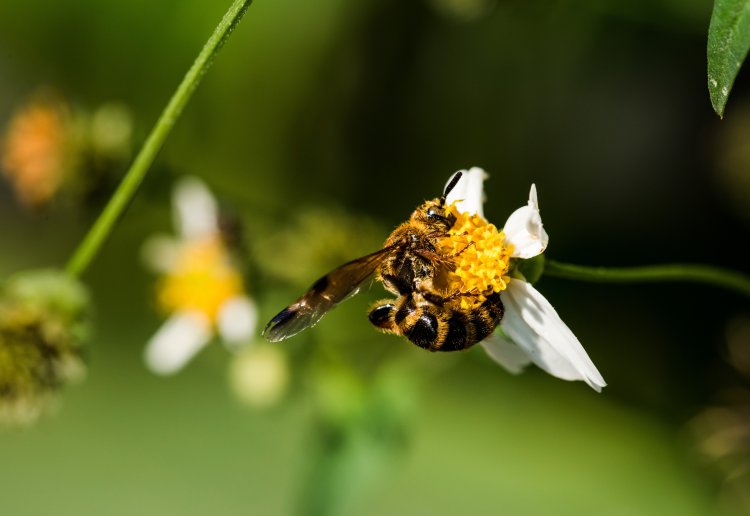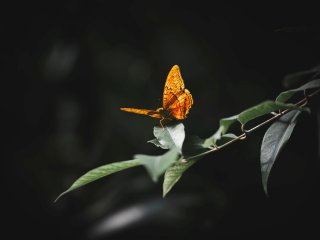Photo: rawpixel / 123RF
Even the smallest insect has its valor
© A Japanese proverb
The year 2021 in Russia was declared the Year of Science and Technology, and August, according to its calendar plan, is dedicated to climate and ecology. Today, as part of the year, we’re talking about the most common causes of insect extinction and the consequences of this process.
Scientists note that the number of terrestrial insects is decreasing by almost 1% (0,92%) annually. Last year, the staff of the Faculty of Geography of Moscow State University participated in the largest study of changes in the insect population, which allowed to systematize the data accumulated over almost a hundred years of observations. The numbers turned out to be very alarming: on average, in 30 years we lose about 24% of terrestrial insects.
“0.92% may not sound like much, but in fact it means 30% fewer insects in 30 years' time and 50% fewer over 75 years. Insect declines happen in a quiet way and we don’t take notice from one year to the next. It’s like going back to the place where you grew up. It's only because you haven't been there for years that you suddenly realize how much has changed, and all too often not for the better,” – says Dr. Roel van Klink, one of the authors of the study.
The scientist noted that insect declines were strongest in some parts of the US (West and Midwest) and in Europe, particularly in Germany.
Scientists have been observing a stable decrease in the insect population in Europe for several decades. In just over thirty years, flying insect biomass in nature reserves in Germany, for example, has decreased by more than 75%.
The extinction of insects is a complex process and it’s hard to single out one factor responsible for the population decline. Nevertheless, habitat destruction is considered one of the most important causes of this harmful phenomenon.
Habitat loss, pesticide use, invasive species and climate change have all played a role in insect declines globally, says the UN. At the same time, artificial light at night is another important – but often overlooked – cause, as it affects insect movement, foraging, reproduction, and predation. Artificial light not only impacts insects: turtles, birds, and many other animals are affected as well, stresses the UN.
The most important direct driver of biodiversity loss in terrestrial systems in the last several decades has been land-use change and excessive exploitation of resources. Photo: rawpixel / 123RF
The decline in the number of insects is observed not only in Europe but also in other parts of the globe. For example, insects and other arthropods have declined by up to 99% over 4 decades in a Puerto Rican forest. As their biomass declined in Puerto Rico, so did numbers of animals that eat them. In their study of the Luquillo forest, the researchers found that the average density of anole lizards fell by half. The population of the Puerto Rican tody, a bird that eats only insects, has dropped by 90% between 1990 and 2015. The researchers claim that by driving down arthropod populations, climate change could disrupt tropical forests even more than previously thought.
Scientists are increasingly saying that now there is a sixth mass extinction of species on Earth. In general, the history of our Earth has five great mass extinctions: the end of the Ordovician period, 445 million years ago: glaciation and extinction of many groups of echinoderms, corals, etc.; the turn of the Fran and Famennian stages and the end of the Devonian period, 372 and 360 million years ago; the turn of the Permian and Triassic periods, 252 million years ago, when there was a grandiose change of marine biota, the extinction of trilobites, corals, echinoderms, etc.; the end of the Triassic period 201 million years ago, when those who survived the boundary between the Paleozoic and Mesozoic (for example, conodonts) disappeared, and new groups of reptiles, dinosaurs, mammals appeared; the boundary between Cretaceous and Paleogene, 66 million years ago: the extinction of dinosaurs, ammonites, belemnites, etc.
Animals losing their natural habitat, as well as human interference in the ecosystem, hunting, poaching, and agriculture, along with climate change, pose a serious threat today. Moreover, the destructive anthropogenic influence only increases with time. Forecasts show that if the situation does not change, 75% of all animals may disappear from the face of the Earth in the next hundred years.
FAO (UN) Close to 35% of invertebrate pollinators, particularly bees and butterflies, and about 17% of vertebrate pollinators, such as bats, face extinction globally. Фото: rawpixel / 123RF
The disappearance of insects, especially bees, can be a blow to the global economy and threaten food security in the world, as more than 75% of the world’s food crops depend, entirely, or at least in part, on animal pollination. Pollinators, such as bees, butterflies, birds, bugs, and even bats, help plants reproduce, the UN writes. The extinction of insects will also lead to a reduction in the number of other animals: primarily birds, reptiles, and amphibians.
Insects clean our world of waste, eliminate carrion and excrement, saturate the soil with oxygen. The symbiosis of plants and insects provides food for the whole world. It is believed that insects contribute about $150 billion a year to the world economy with their pollination, and their processing function is estimated at $ 3trillion a year.
While the number of terrestrial insects is decreasing, scientists record an increase in the number of aquatic insects.
“Studies of insects that live (part of) their lives under water, like midges and mayflies, showed an average annual increase of 1.08%. This corresponds to a 38% increase over 30 years. This positive trend was particularly strong in Northern Europe, in the Western US, and since the early 1990s, in Russia.” – says Roel van Klink.
Also, according to the mentioned study, the number of insects living in the crowns of trees remains almost unchanged.
Based on:
● https://journals.plos.org/plosone/article?id=10.1371/journal.pone.0185809
























